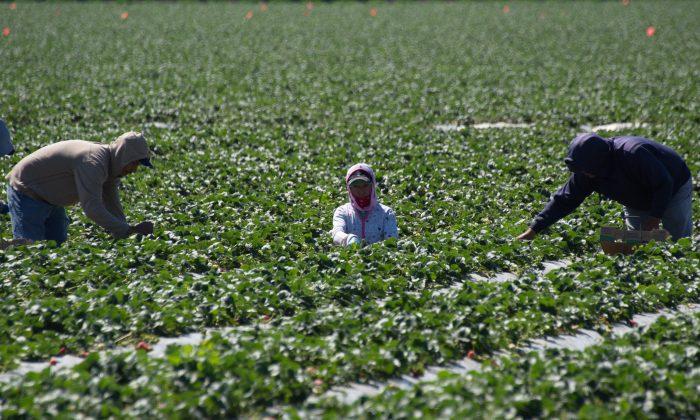Rep. Frank Lucas (R-Okla.) introduced the Federal Agriculture Reform and Risk Management Act (FARRM) May 13, 2013, but it failed in a House vote on June 20. Those who could wade through its 620 pages saw that the bill ultimately would be footed by the taxpayer.
Looking at the farm bill from a historical perspective, the first farm bill was enacted in 1933, during the Great Depression. The farm bill is omnibus legislation because it comprises many different programs. It is reworked and re-enacted every five to seven years. Afterward, each of the different programs is allocated money from taxpayers’ funds on an annual basis.
Benefits and Cost
At first glance, the bill ticks all the boxes.
Lucas, chairman of the House Agriculture Committee, stated in a May 16 press release that the farm bill would realize “nearly $40 billion in savings by eliminating outdated government programs and reforming others.”
The $40 billion in savings included $6 billion due to sequestration. The bill would have consolidated over 100 existing programs, done away with direct payments, and supported farmers in times of need.
Savings to the American taxpayer would have been $33.2 billion, according to the Congressional Budget Office (CBO), which is $6.8 billion less than Lucas suggested. The CBO calculated the total cost of the FARRM Act to be $939 billion spread over 2014 and through 2023.
Article Continues after the discussion. Vote and comment
[tok id=6d21f2634d2d4e884cf20f5808466299 partner=1966]According to the CBO, the Judiciary Committee didn’t believe that federal revenues would be affected, while the Agriculture Committee estimated that federal revenues would increase significantly between 2014 and 2023.
This bill “saves taxpayers’ money, reduces deficit spending, and repeals outdated government programs while reforming, streamlining and consolidating others. … Every part of this bill contributes fairly to deficit reduction,” according to the bill summary published by the committee.
Welfare for the Wealthy
Ultimately, however, farm subsidies have to be paid by taxpayers and are not evenly distributed.
Subsidy watchers suggested that the farm bill is similar to oil subsidies.
“US taxpayers spend about $20 billion a year on subsidies to American farmers. This money mostly flows to the largest farms and the wealthiest 15 percent of farm households,” states a Mercatus Center report, released on June 17.
According to the report, currently $77 billion of the total farm bill allocation is for nutrition programs and $23 billion is earmarked for farmers. Private sector agriculture insurance companies receive about $2.5 billion.
Ten percent of U.S. farm operations that produce wheat, cotton, corn, and rice, whose earnings are large enough so they don’t need a subsidy, receive $14 billion of the remainder. Farmers who grow fruit, vegetables, and raise cattle are profitable without receiving a government handout, according to Mercatus.
A Money Morning article suggests that a large portion of the funds benefit “dozens of large U.S. corporations, such as Wal-Mart Stores Inc., Monsanto Co., Kraft Foods Group Inc., and Tyson Foods Inc.”
“The recipients of ‘farm’ bill subsidies are big, rich farmers—some of which don’t actually grow anything. These big, financially stable farms are reaping record-high profits and have record-low debt,” an article on the Heritage Action for America website states.
The Heritage Foundation’s blog, The Foundry, names individuals and companies that have benefited from the farm bill, but were not farmers.
Riceland Foods Inc. received $554 million between 1995 and 2012. The Rockefeller family has received $591,057 since 2006. Lucas’s wife has been a beneficiary of the farm bill, having received funds between 1999 and 2003, as well as in 2007, 2011, and 2012.
Lobbying For a Piece of the Pie
Like other corporations, big farms use lobbying to influence policymakers.
“More than 1,000 companies, trade associations and other groups spent an estimated $173.5 million lobbying on just the 2008 Farm Bill,” according to a Food & Water Watch report.
Former House Agriculture Committee Chairman Larry Combest (R-Texas) and former ranking member Charlie Stenholm (D-Texas) collected over $1 million each in fees for lobbying during the 2008 Farm Bill deliberations, according to the report.
Significant amounts of money from farm bill subsidies are going into the pockets of companies such as Monsanto Co., DuPont Co., and Archer Daniels Midland Co., thus a lot of money is spent on lobbying. The above three companies spent $2.5 million, $669,000, and $1.3 million respectively for lobbying in 2008. Lobbying cost Wal-Mart Stores Inc. $440,000, SuperValu Inc. $367,000, and Safeway Inc. $350,000.
The Mercatus Center states that the Republican leadership requested a $3.4 billion reduction in the farm subsidy program in the FARRM Act 2013, while “in implicit defiance of the House Republican leadership, the chair of the House Agriculture Committee, Representative Frank Lucas” announced that only $1.8 billion would be cut from the farm subsidy program.
The fight for a fair farm bill continues, with the current bill expiring on Sept. 30. After three years and 46 hearings and audits, the FARRM Act of 2013 failed. Large subsidies to corporations and wealthy individuals remain an issue, while taxpayers continue to foot the bill.




